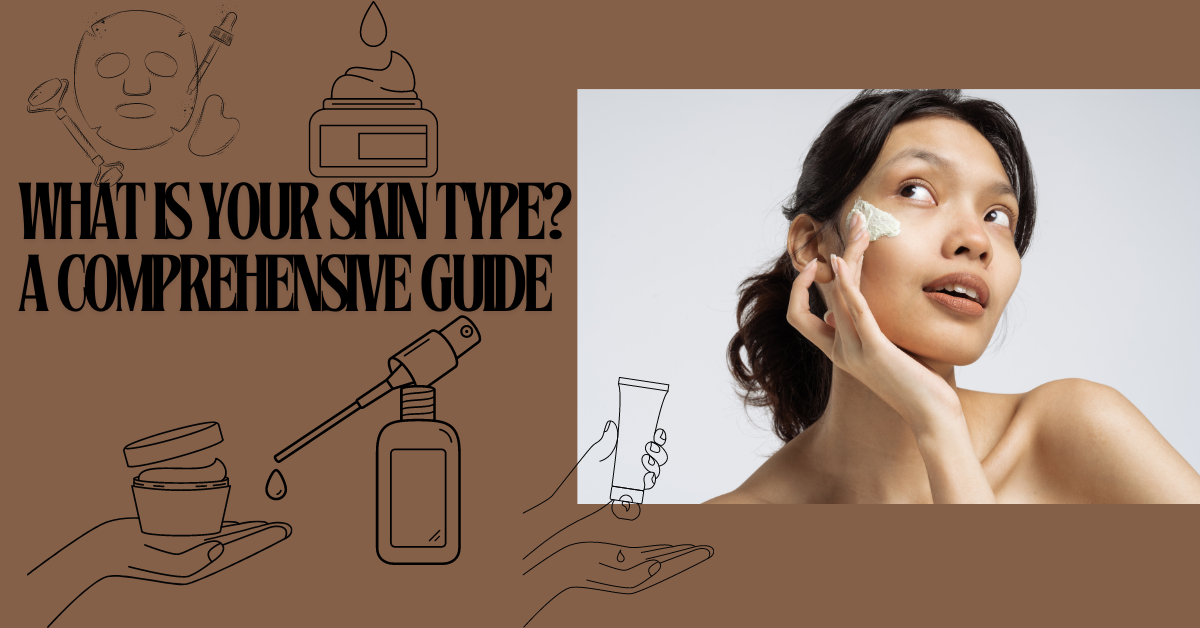Understanding Your Skin Type: A Complete Guide”
What is Your Skin Type? A Comprehensive Guide First of all Understanding your skin type is crucial for creating an effective skincare routine. Different skin types require different care, and using the wrong products can lead to issues such as dryness, oiliness, or irritation. In this guide, we’ll explore how to identify your skin type, the characteristics of various skin types, and tips for selecting the best skincare products for each.
What is Your Skin Type? A Comprehensive Guide How to Identify Your Skin Type
To determine your skin type, start with a simple skin test. Cleanse your face with a gentle cleanser and wait for an hour without applying any products. Then, observe how your skin feels and looks. This will help you identify whether your skin is oily, dry, combination, sensitive, or normal.
Different Skin Types
- Oily Skin: Characterized by excess oil production, shiny skin, and enlarged pores. People with oily skin often experience acne and blackheads.
- Dry Skin: Features a lack of moisture, flakiness, and a tight feeling. Dry skin can be prone to irritation and visible lines.
- Combination Skin: Exhibits characteristics of more than one skin type. Typically, the T-zone (forehead, nose, and chin) is oily, while the cheeks are dry or normal.
- Sensitive Skin: Sensitive skin can react easily to products, leading to redness, itching, and irritation.
- Normal Skin: Balanced skin that is neither too oily nor too dry. It has a smooth texture and minimal blemishes.
Skin Care Tips by Skin Type
- Oily Skin: Shiny appearance, large pores, frequent breakouts.
- Dry Skin: Flaky patches, tightness, dullness.
- Combination Skin: Oiliness in T-zone, dryness or normalcy in cheeks.
- Sensitive Skin: Redness, itching, stinging.
- Normal Skin: Even texture, minimal blemishes, comfortable feel.
Oily Skin vs. Dry Skin
The primary difference between oily and dry skin lies in oil production. Oily skin has overactive sebaceous glands that produce excess sebum, leading to a shiny appearance and potential acne. Dry skin, on the other hand, lacks sufficient moisture, often feeling tight and looking flaky.
Combination Skin Care Tips
Balancing combination skin can be challenging. Use products that address both oily and dry areas. A gentle exfoliator can help with excess oil, while a hydrating moisturizer will alleviate dryness. Avoid harsh products that can exacerbate either condition.
Sensitive Skin Solutions
For sensitive skin, choose products with minimal fragrance and no irritating ingredients. Look for soothing components like chamomile or aloe vera. Test new products on a small area before applying them to your entire face to avoid adverse reactions.
Normal Skin Care Routine
Normal skin requires basic maintenance. Use a mild cleanser, a balanced moisturizer, and a broad-spectrum sunscreen. Regular exfoliation and occasional treatments can help maintain skin health and address any minor concerns.
Best Products for Oily Skin

Opt for oil-free or non-comedogenic products. Gel-based moisturizers and mattifying sunscreens can help control shine. Salicylic acid and benzoyl peroxide are effective for managing acne and unclogging pores.
Hydrating for Dry Skin
For dry skin, choose rich, emollient products that provide deep hydration. Ingredients like hyaluronic acid, glycerin, and ceramides are excellent for replenishing moisture. Avoid products with alcohol or astringents that can strip natural oils.
Skincare Routine for Sensitive Skin
Sensitive skin benefits from gentle, hypoallergenic products. Look for calming ingredients like oat extract or calendula. Avoid exfoliating too frequently, and always perform a patch test before trying new products.
Balancing Combination Skin
Use a dual-action cleanser that targets both oily and dry areas. Apply lightweight, non-greasy moisturizers to prevent dryness in certain areas without adding excess oil. Tailor your products to each area of your face as needed.
Personalized Skincare Guide
A personalized skincare guide takes into account your unique skin type and concerns. Identify your skin type and select products tailored to your needs. Regularly reassess your skin’s condition and adjust your routine as necessary.
Skin Type Analysis
Performing a skin type analysis helps in understanding how your skin reacts to different products and environmental factors. Consult a dermatologist for a professional assessment if you’re unsure about your skin type or if you have specific concerns.
Choosing Products for Your Skin Type

When choosing products, consider your skin type’s specific needs. Look for formulations designed to address your skin’s characteristics. For example, oily skin benefits from lightweight, oil-free products, while dry skin needs rich, moisturizing formulas.
Skin Care for Different Skin Types
Different skin types require different approaches. Oily skin needs oil control, dry skin needs hydration, sensitive skin requires gentle care, and normal skin benefits from balanced maintenance. Tailoring your skincare routine to your specific skin type is essential for achieving optimal results.
Tailored Skincare Routines
A tailored skincare routine is key to addressing individual skin concerns. Use products that fit your skin type and adjust your routine based on seasonal changes or specific issues.
Common Skin Type Concerns
Common concerns include acne for oily skin, flakiness for dry skin, irritation for sensitive skin, and balancing products for combination skin. Addressing these issues with appropriate products and techniques will help maintain healthy skin.
Skin Care Tips by Skin Type
- Oily Skin: Use oil-control products and avoid heavy creams.
- Dry Skin: Incorporate hydrating serums and avoid hot water.
- Combination Skin: Apply different products to different areas.
- Sensitive Skin: Choose fragrance-free, soothing products.
Conclusion
Understanding your skin type is the foundation of effective skincare. Whether your skin is oily, dry, combination, or normal, there are products and routines tailored just for you. Start with a skin type quiz, build your routine around your skin’s needs, and enjoy the benefits of healthy, glowing skin.
This guide should help you identify your skin type and create a skincare routine tailored to your needs. By following these tips, you’ll be on your way to achieving beautiful, healthy skin.
Your skin type can be categorized into one of five main types: oily, dry, combination, sensitive, or normal. To determine your skin type, you can take a skin type quiz or observe how your skin behaves throughout the day. Key indicators include oiliness, dryness, sensitivity, and the presence of specific concerns like acne or redness. Understanding your skin type helps you choose the best skincare products and routine for your specific needs.
Neither oily nor dry skin is inherently better; both have pros and cons. Oily skin is less prone to wrinkles, while dry skin often has smaller pores and less acne. The best skin type is one that’s healthy and well-maintained.
Pimples are most common in oily and combination skin types. Excess oil production in these skin types can clog pores, leading to acne and breakouts, especially in areas with more sebaceous glands.
Your natural skin type is the way your skin behaves without any products or treatments. It could be oily, dry, combination, sensitive, or normal, depending on factors like genetics, environment, and lifestyle. Identifying it helps you choose the right skincare routine.




